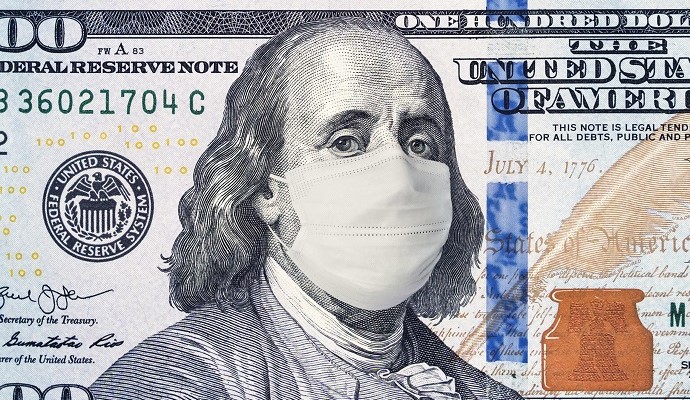Hospital Revenue Falling $1.4B A Day As Patient Volume Drops
Patient volumes have been cut in half despite expected surges in COVID-19 cases, resulting in drastic hospital revenue losses since the start of the pandemic in the US.

Source: Getty Images
- Hospital revenue is dropping by an average of $1.4 billion per day as COVID-19 continues to impact patient volumes, according to a new Crowe RCA Benchmarking analysis.
For more coronavirus updates, visit our resource page, updated twice daily by Xtelligent Healthcare Media.
With the exception of New York City and San Francisco – two of the largest COVID-19 hotspots – health systems across the country experienced an average decline in patient volume of 56 percent between March 1, 2020, and April 15, 2020.
This dramatic reduction in patient volume is resulting in severe revenue losses for hospitals with more than 100 beds and indicates a long road to recovery ahead, the analysis of over 1,100 hospitals in 45 states showed.
“In many ways, America’s hospitals are and will remain ground zero for the COVID-19 crisis,” Brian Sanderson, managing principal of healthcare services at Crowe, said in a press release. “Despite government monetary relief and supply assistance, the economic effects of March and April 2020 will affect the operations of our healthcare system long after the curve flattens or dissipates.”
READ MORE: How COVID-19 Is Impacting the Healthcare Revenue Cycle
Hospitals have prepared for a sudden surge of COVID-19 patients as the highly contagious coronavirus continues to spread. At the time of publication, data from Johns Hopkins University showed that there are over 3.6 million confirmed cases of COVID-19 in the US, with more than 1.1 million hospitalizations.
These numbers have increased day after day but increases in COVID-19 cases have not offset the drastic declines in patient volumes in other parts of the health system, Sanderson stated.
According to the analysis, inpatient admissions ran over 30 percent compared to January 2020, while emergency department visits and observation services were down 40 and 47 percent, respectively.
Health systems across the country also saw outpatient volumes fall, with outpatient ancillary services declining 62 percent and outpatient surgery volume decreasing 71 percent.
The service mix impact from the COVID-19 public health emergency was national in scope despite some states being hit harder than others during the analysis’ period. For example, in California where there have been some COVID-19 hotspots, overall patient volume was cut in half from March to the end of April. Florida and Texas also saw similar declines at 47 and 56 percent, respectively.
READ MORE: Documentation to Ease Medical Billing Issues Due to COVID-19
Meanwhile, overall patient volume was down 59 percent in Illinois, which had yet to see predicted surges of hospital care related to COVID-19, according to Crowe. The overall decline was driven by a 76 percent reduction in outpatient surgeries.
Providers across the country have had to cancel or postpone many outpatient services as hospitals prepare for the surge in COVID-19 case. Shelter-at-home orders and other coronavirus restrictions have also stopped patients from seeking care.
Illinois is one of the states with the strictest coronavirus restrictions, according to a recent WalletHub report ranking the states with the fewest COVID-19 restrictions showed. California came in at the 29th state with the fewest restrictions, while Texas and Florida came in at 8th and 9th, respectively.
This loss in volume could spell serious trouble for Illinois hospitals, Crowe reported. For an average 350-bed hospital in the state, the patient volume declines equate to decreases in net revenue of $695,000 per day, or $23.6 million through April 25, the analysis found.
Relief from the government through grants and advance Medicare payments does not cover revenue losses of this magnitude, the authors stated.
READ MORE: Playing Defense Key to Overcoming Fiscal Challenges of COVID-19
With hospital revenue losses tallying every day during the pandemic, health systems must prepare for a long recovery, Sanderson stressed. Each hospital’s revenue recovery program will be unique based on how COVID-19 impacted their communities, but all leaders will need to address certain clinical and operational factors, he said.
First, the average hospital will need to operate at 110 percent of previous capacity for six consecutive months to recover from lost patient volume.
Pent up demand for elective surgeries and other procedures delayed due to social distancing, shelter-at-home orders, and other coronavirus restrictions will also need to be prioritized. Hospitals will need to determine whether “clinically critical” or “highest-efficiency” procedures should be done first, as well as which specialties will need to retain operating room block time, Sanderson advised.
Additionally, Sanderson recommended that hospitals look at revenue cycle processes, which will have likely changed due to temporarily-relieved requirements for authorizations, copay forgiveness, and other flexibilities granted by payers during the public health emergency.
CMS and other payers have aimed to give hospitals maximum flexibility to bolster the workforce and capacity. This has included expanding telehealth coverage, extending the list of who can provide certain services (e.g., physician assistants and nurse practitioners), and waiving prior authorizations for certain services.
Hospitals will need determine what has changed in the revenue cycle and what will go back to pre-coronavirus norms. Revenue will depend on understanding new rules and flexibilities.
Finally, hospitals should consider how many furloughed staff should return and when, Sanderson stated. Consideration should also be given to patients who will be hesitant to seek care in the hospital setting unless leaders can guarantee that the environment is free from contagious elements, he concluded.
